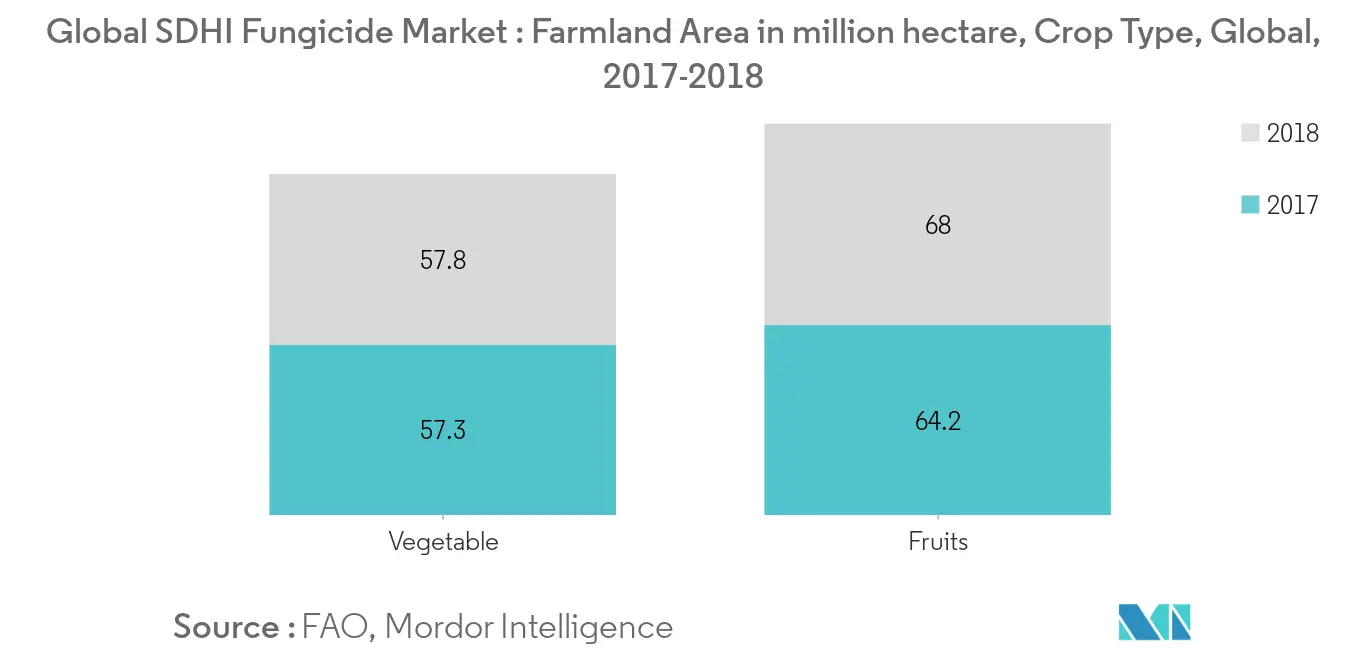Market Trends of Global SDHI Fungicide Industry
This section covers the major market trends shaping the SDHI Fungicide Market according to our research experts:
Increasing Arable Land
As per the Food and Agriculture Organization, the global arable under the cereals accounted for 728 million hectares, Vegetables accounted for 57.8 million hectares, Fruits accounted for 68.0 million hectares and Pulses accounted for 95.7 million hectares in 2018. Also, the World population as well is projected to reach 8.5 billion by 2030, 9.7 billion by 2050, and 11.2 billion by 2100. Beneficial for both the agriculture and horticulture sectors, SDHI fungicides are gaining popularity and recognition in crop protection practices, as they help protect the crop effectively against the fungal infestation.
South Asia is using 94% of its arable land, while Sub-Saharan Africa uses only 22% of the potentially arable land for cultivation. The increasing population, increased demand for food, increased government initiatives towards food securities are some of the factors that are driving the SDHI fungicide market globally. Concerns on land degradation, known as 'desertification', which occurs due to climatic and human activities, are also increasing across the globe. Hence these factors are anticipated to drive the usage of SDHI fungicide.

Europe Dominates the Market
The adoption rate of SDHI fungicides in the cereals segment is rising significantly with fluxapyroxad as an active ingredient form the major sub-segment of SDHI fungicide. This adoption rate of SDHI fungicides is increasing to fight the 'net blotch' fungal disease in barley, which if not controlled can lead to yield losses of up to 40%. In UK, SDHI fungicides application is rising in pome crop segment against diseases, such as scab and powdery mildew, as well as in oilseeds segments, such as oilseed rape against leaf spot diseases.
One of the major aspects that impact the growth of the SDHI fungicides market is the increasing concern regarding the variability in results and fear of increasing SDHI fungicide resistance. Thus, to compete with the rising demand, prominent players such as Syngenta in 2016, launched SDHI fungicide ELATUS™ ERA, based on the novel active ingredient SOLATENOL™ in co-formulation with prothioconazole, in the United Kingdom, has been registered ahead of the 2017 season.


